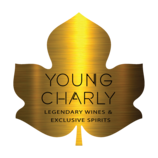Ron, Rum, Rhum: Three times the same and yet completely different
Discover the three main styles in the world of Rum: Spanish, English and French style
Rum has a rich history closely tied to colonial trade routes and the sugar cane plantations of the tropics. The influences of the various colonial powers have left their mark on rum production methods and flavor profiles, leading to three main categories that are still leading today: Spanish style, English style and French style. Each of these styles reflects the unique culture, production methods and flavors of the regions in which they originated.
What is Spanish style rum?
Origin: The Spanish style of rum has its roots in former Spanish colonies such as Cuba, Puerto Rico, the Dominican Republic and Venezuela. These regions have a long history of sugar production, which has led to a preference for rum based on molasses, a byproduct of sugarcane.
Method of production: Spanish style rum is usually distilled using column distillation (column still). This type of distillation produces a softer and lighter rum, which has less intense flavors than rum produced with a traditional pot still.
Flavor Profile: Due to the use of molasses and column distillation, Spanish style rum is often lighter and more subtle in flavor. Common flavor notes include vanilla, caramel, and a slight sweetness. The result is a rum that is often more accessible to novice rummers, both pure and in cocktails.
Aging: Spanish style rums are often aged in oak barrels, with some producers using the solera system adopt, a method originally from sherry production. This system blends younger and older rums for a more complex and consistent final product. Due to the tropical temperatures in Latin America, rum matures faster, contributing to a rich flavor.
Sample brands: Ron Carupano, Contrabando, Gold of Mauritius, Ron Alegre
English style Rum: rich and robust
Origin: The English style originated in former British colonies such as Jamaica, Barbados, Trinidad and Guyana. The English have developed a preference for firm, rich and aromatic rums, often produced from longer fermented molasses.
Method of production: Traditionally, English style rum is made with pot still distillation. Unlike column distillation, a pot still produces a rum with a higher concentration of flavors and aromas. This process gives English style rum its distinctive full and robust flavor. Nowadays, this style is also on the rise in the use of Column stills, and we often see a combination of the two.
Flavor Profile: English style rum is often rich, complex and intense. Common flavors include dried fruit, spices, toffee, and caramel. English style rum is ideal for the seasoned rum lover who enjoys a powerful, aromatic drink with depth.
Aging: These rums are usually aged in oak barrels, with the heat and humidity of the Caribbean accelerating the aging process. This enhances the robust character and rich flavor of the rum.
French style Rum: Rum Agricole and authentic earthy flavors
Origin: French-style rum, also called rhum agricole, has its origins in former French colonies such as Martinique, Guadeloupe and Reunion. This style differs significantly from the Spanish and English styles in that it is made directly from fresh sugarcane juice rather than molasses.
Method of production: Rhum agricole is often distilled by column distillation, but the alcohol concentration is usually lower, so that the flavors and aromas of the sugar cane are well preserved. The production of rhum agricole is subject to strict rules in many regions, such as the AOC (Appellation d'Origine Contrôlée) in Martinique, which guarantees quality.
Flavor Profile: Rhum agricole has a pronounced, earthy and sometimes grassy flavor with fruity and slightly acidic notes. The use of fresh sugarcane juice instead of molasses gives this rum an authentic, vegetal flavor beloved of lovers of distinct and complex flavors.
Aging: As with other styles, rhum agricole is often aged in oak barrels, but some varieties are bottled immediately after distillation as blanc or white rum, which is used in cocktails. The aged varieties gain extra depth through the influence of French oak barrels, which sometimes adds subtle vinous notes.
Sample brands: Barbancourt, Père Labat
Which rum suits you?
The different styles of rum offer a wide range of flavors, from light and subtle to complex and powerful. Here is a quick summary of the three styles:
- Spanish style: Light, soft and accessible rum with sweet notes. Ideal for those who are new to the world of rum and like to drink something lighter and softer.
- English style: Rich, full-bodied and complex rum, perfect for those who love robust and intense flavors.
- French Style (Rum Agricole): Earthy, fruity and grassy with a unique vegetal flavor. Suitable for the adventurous drinker who enjoys distinct, natural flavors.
Whether you are a seasoned rum lover or new to the world of this tropical drink, the versatility of rum means there is always a style to suit your taste. Try different styles and discover your favorite in this versatile spirits category!
By understanding these differences, you can look specifically for a rum that suits your preferences. Explore the world of rum and who knows, you might discover new flavors you've never tasted before!



